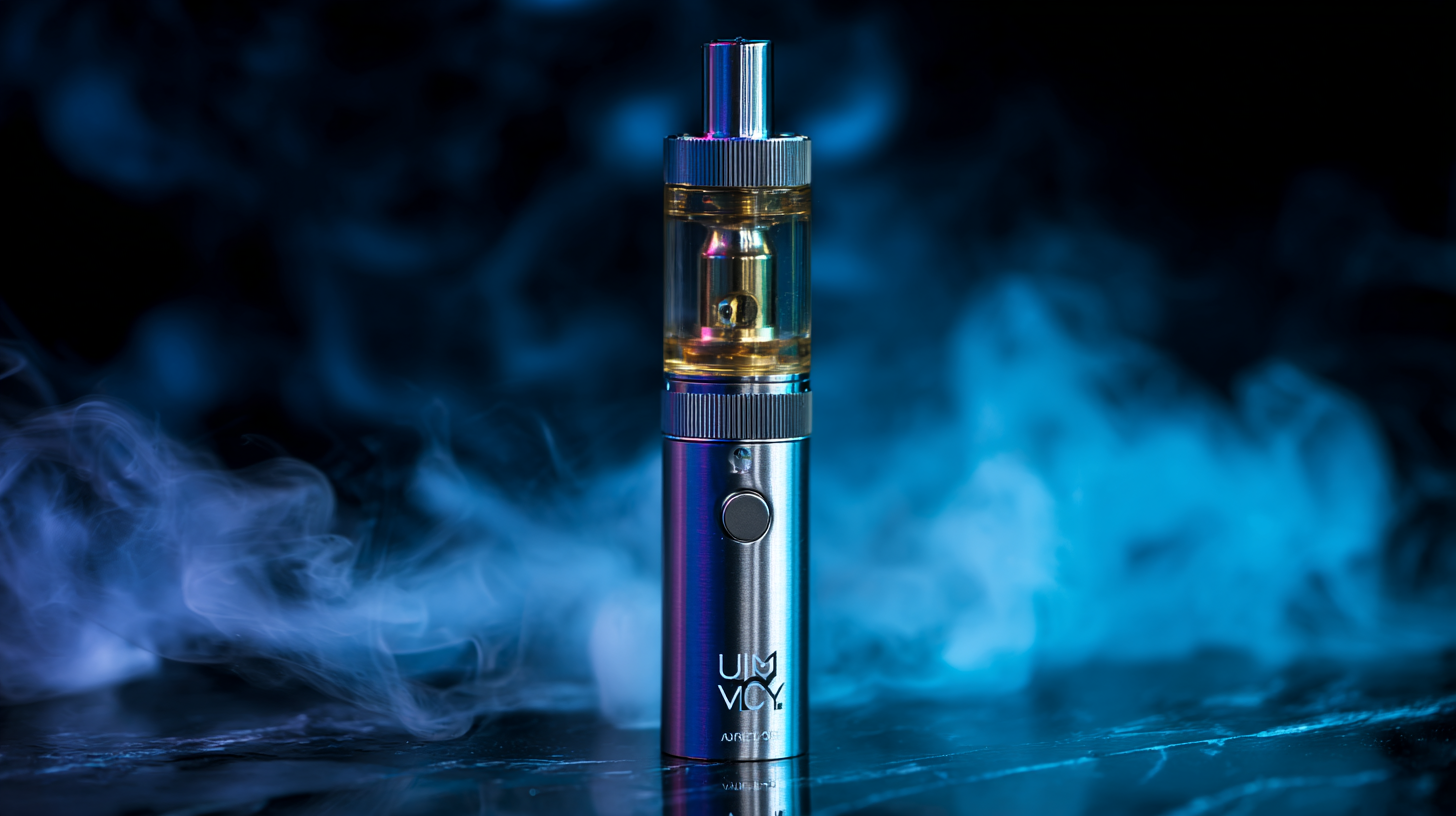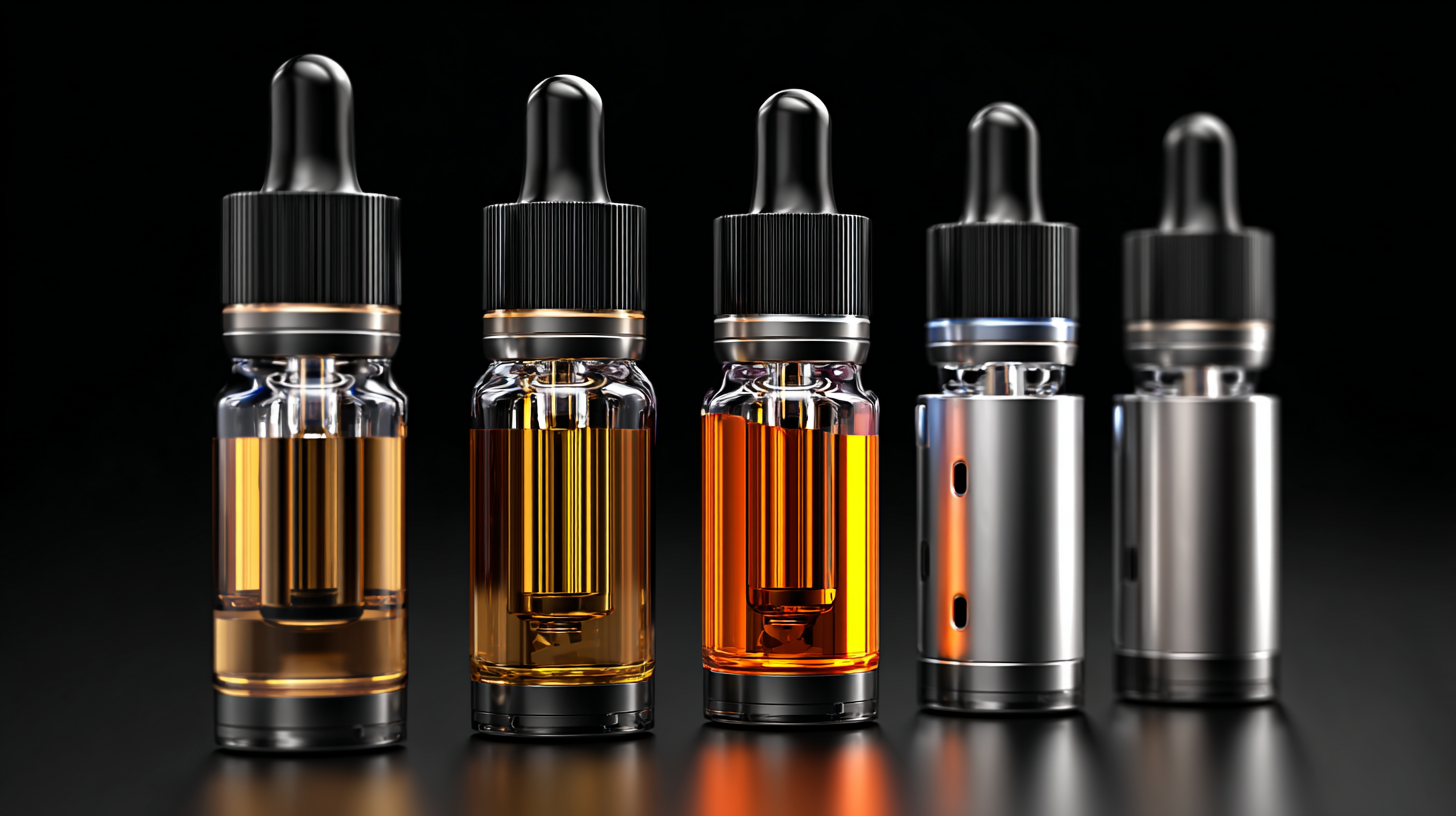In recent years, China's Premier Export of Quality Synthetic Nicotine E-Juice has emerged as a game-changer in the global e-cigarette market, driving innovation and setting new standards for flavor and potency. As more consumers seek alternatives to traditional tobacco products, the demand for high-quality synthetic nicotine e-juice continues to soar, offering a cleaner and more palatable vaping experience. This blog will explore the detailed technical specifications behind this synthetic marvel, highlighting the benefits it brings to users and manufacturers alike.

Additionally, we will provide a comprehensive "how-to" guide for those interested in navigating the increasingly complex landscape of synthetic nicotine. With China's advancements in this field, understanding the specifications and application processes of synthetic nicotine e-juice is essential for both consumers and industry stakeholders looking to stay ahead in this rapidly evolving market.
China has established itself as a dominant player in the global market for synthetic nicotine e-juice, but this rapid expansion raises significant concerns regarding production standards and safety oversight. Reports indicate that the number of e-cigarette manufacturers in China has surged, with estimates suggesting over a thousand companies are now operational. However, many of these businesses appear to be functioning with minimal regulatory supervision, leading to potential risks regarding product quality and consumer safety.

The synthetic nicotine production process is complex and requires adherence to stringent standards to ensure quality and safety. According to industry reports, high-quality synthetic nicotine should contain fewer impurities and meet specific compositional criteria to ensure consistency and reliability. Yet, the lack of oversight means that not all manufacturers prioritize safety protocols, which can lead to flawed production practices. Experts emphasize that unreliable manufacturing processes may result in products that do not meet consumer expectations, highlighting the necessity for more robust regulatory frameworks in this booming industry.
With China positioned as a leader in the synthetic nicotine e-juice market, it is essential for both manufacturers and regulators to prioritize the implementation of rigorous production standards. Strengthening quality control measures could enhance product credibility and ensure that consumers receive the level of quality they expect. As the market continues to evolve, achieving a balance between innovation and safety will be crucial to sustaining growth in this competitive landscape.
As the global demand for vaping products continues to surge, synthetic nicotine has emerged as a game-changer in the e-juice market. A recent report from Grand View Research indicates that the global synthetic nicotine market is expected to grow at a compound annual growth rate (CAGR) of 4.5% from 2023 to 2030. China's ability to produce high-quality synthetic nicotine e-juice at competitive prices has positioned it at the forefront of this burgeoning industry. Chinese manufacturers, known for their stringent quality controls and innovative formulation strategies, are meeting the rising consumer demands for cleaner and more sustainable smoking alternatives.
**Tips:** When sourcing synthetic nicotine products, always check for certifications and third-party testing to ensure quality and compliance with health standards. Additionally, understanding the different types of synthetic nicotine available can help you choose the right product that meets consumer preferences.
The shift in consumer preferences towards synthetic nicotine can also be attributed to its perceived safety compared to traditional tobacco-derived nicotine. According to a report from the Tobacco Control journal, nearly 76% of vapers express a preference for synthetic nicotine due to its cleaner profile. As more countries tighten regulations on tobacco products, the adoption of synthetic nicotine is likely to accelerate, making it a strategic investment for businesses aiming to capture this growing market.
**Tips:** Stay updated with the latest regulations in your region regarding synthetic nicotine, as compliance can significantly impact your market entry strategies. Engaging with industry forums can also provide insights into emerging trends and consumer behavior.
This chart illustrates the growth of China's synthetic nicotine e-juice market share from 2020 to 2023, highlighting a significant increase due to rising global demand.
The rapid evolution of the e-juice market has seen China emerge as a significant player, particularly with the export of high-quality synthetic nicotine e-juices. This shift is largely attributed to innovation in formulation, which is redefining the standards for vaporized products. According to a recent report by the International Vape Association, the global e-liquid market is expected to reach $4.5 billion by 2025, with synthetic nicotine products leading the charge thanks to their purity and consistency.
One of the key factors driving the quality of synthetic nicotine e-juices in China is the advancement in formulation techniques. Manufacturers are leveraging cutting-edge technology to produce nicotine with a higher concentration while maintaining a smoother vaping experience. A study published in the Journal of Pharmaceutical Sciences indicated that synthetic nicotine can achieve an 85% reduction in impurities compared to natural extracts, which contributes significantly to the overall quality and flavor profiles of the e-juices. This meticulous attention to formulation not only caters to the demands of vaping enthusiasts but also addresses the regulatory landscape that increasingly favors products with reduced harmful substances.
Furthermore, the focus on innovative flavor combinations and user customization has paved the way for notable market differentiation. Recent analytics from Statista highlight that more than 67% of vape users prefer flavored products, further emphasizing the importance of quality formulation in attracting and retaining a loyal customer base. With China's commitment to quality and innovation, the country is poised to maintain its supremacy in the global synthetic nicotine e-juice market, continually setting benchmarks for the rest of the industry.
Navigating the regulatory landscape for synthetic nicotine exports is crucial for producers aiming to maintain their competitive edge in the global market. As countries adjust their laws and guidelines surrounding nicotine products, businesses must stay informed to ensure compliance and avoid costly penalties. For instance, in the United States, the FDA has implemented strict regulations regarding the manufacturing and marketing of synthetic nicotine products, reflecting a broader trend in tightening regulations worldwide. According to recent industry reports, the global synthetic nicotine market is projected to grow at a compound annual growth rate (CAGR) of over 20% through 2025, emphasizing the importance of adherence to these regulatory frameworks.
China, being a significant player in the export of synthetic nicotine e-juice, must effectively navigate these complexities to fulfill increasing international demand. As highlighted by the latest market analysis, around 30% of synthetic nicotine in the global e-juice market comes from China. However, compliance with diverse regulations—such as labeling, ingredient transparency, and safety testing—is imperative. Reports indicate that companies that prioritize regulatory adherence not only mitigate risks but also enhance their brand reputation, resulting in better market access and sustainable growth opportunities. Thus, staying ahead of the regulatory curve is essential for Chinese exporters hoping to lead in the global synthetic nicotine sector.

In recent years, China's synthetic nicotine e-juice industry has gained global prominence, particularly through its commitment to sustainable production practices. A report from the International Tobacco Control Policy Evaluation Project (ITC) highlights that over 60% of e-liquid manufacturers in China have adopted eco-friendly methods, which include using renewable energy sources and minimizing waste in their production processes. This shift not only aligns with global sustainability goals but also positions China as a leader in the synthetic nicotine market.
Moreover, research from Market Research Future indicates that the global synthetic nicotine market is projected to grow at a compound annual growth rate (CAGR) of 14.5% from 2022 to 2028. China's proactive measures to reduce its carbon footprint have played a crucial role in this growth. By prioritizing sustainable sourcing of raw materials and implementing stringent recycling protocols, Chinese manufacturers are setting a benchmark for eco-friendly practices in the vaping industry. This not only enhances product quality but also appeals to environmentally-conscious consumers worldwide, fostering a more sustainable future for the e-juice market.
| Year | Export Volume (Metric Tons) | Revenue (Million USD) | Sustainable Practices (%) | Consumer Satisfaction (%) |
|---|---|---|---|---|
| 2020 | 5000 | 150 | 65 | 85 |
| 2021 | 6000 | 180 | 70 | 87 |
| 2022 | 7000 | 210 | 75 | 90 |
| 2023 | 7500 | 250 | 80 | 92 |
